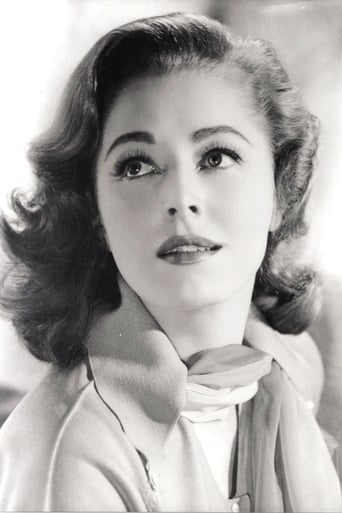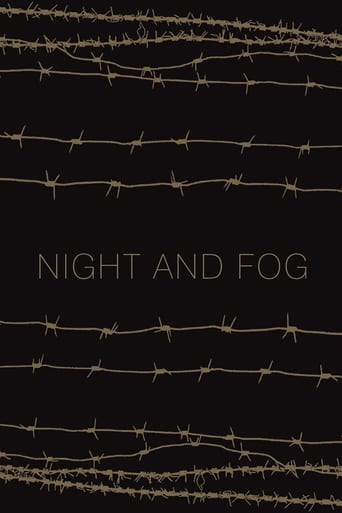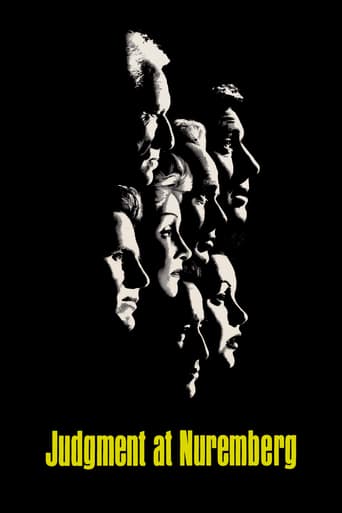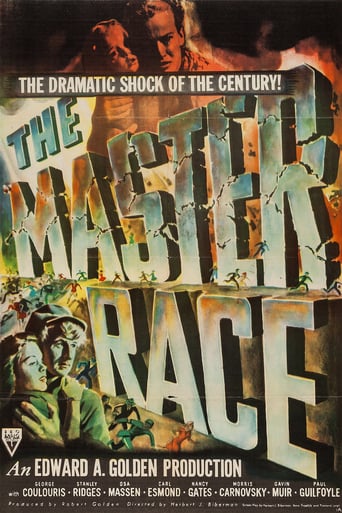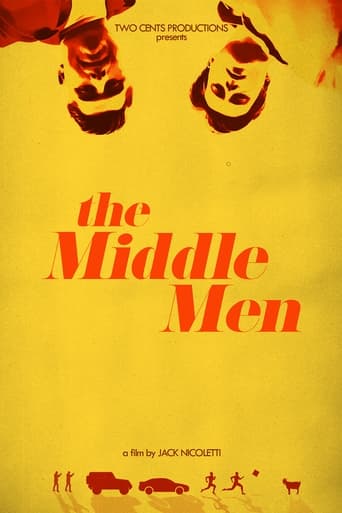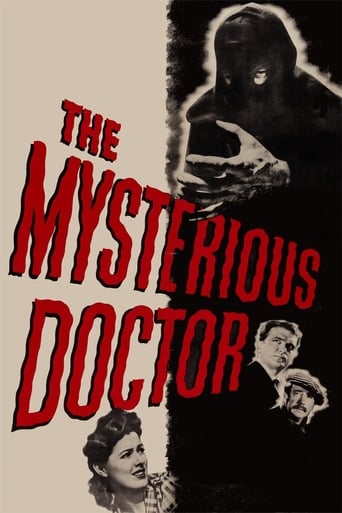
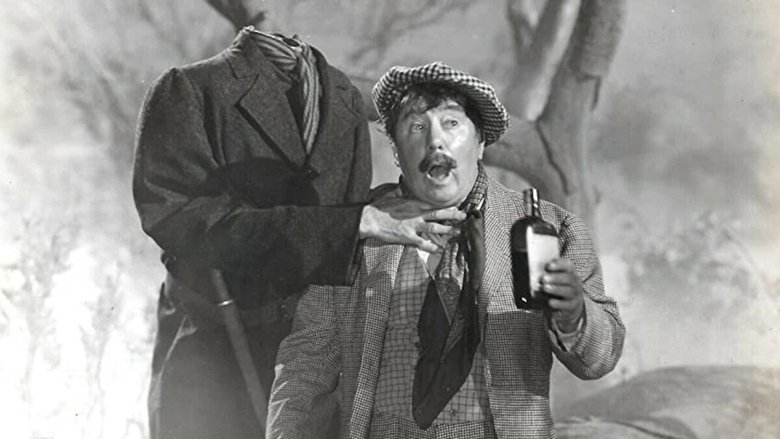
The Mysterious Doctor (1943)
The citizens of a tiny Cornish village are tormented during World War II by a headless ghost which is haunting the local tin mine.
Watch Trailer
Cast


Similar titles
Reviews
I cannot say I was aware of this one before our own Michael Elliott gave it a thumbs up not that long ago; actually emerging as only borderline horror, it effectively mingles a traditional plot – an English village, complete with hulking idiot and disfigured bartender hiding his features behind a hood(!), lives in fear of an ancient curse involving a headless ghost – with topical (i.e. WWII) concerns. The village mine was being utilized to produce tin for the Allied cause so the Axis powers apparently felt the need to send out one of their own to intermingle in the community and recreate by night the legend of The Headless Ghost, thus curtailing the mining operations which are subsequently abandoned. The prerequisite foggy atmosphere is thickly laid on, the plot is fairly engaging and the modest but pleasing cast – squire John Loder, the lovely Eleanor Parker, title character Lester Matthews, dim-witted Matt Willis, etc. – is sympathetic to the material at hand. Besides, being a compact 57-minute 'B' flick, it is essentially comparable in quality and effect to the likes of Fox's DR. RENAULT'S SECRET and THE UNDYING MONSTER (both 1942).
"The Mysterious Doctor" was a Warner Brothers' World War II era propaganda B-movie that entwined horror and espionage. Originally entitled "The Mystery Doctor," this mild horror chiller whodunit was helmed by "Secret Enemies" director Ben Stoloff between August 13, 1942, and late September 1942. "G.I. Honeymoon" scenarist Richard Weil penned the original screenplay. "The Mysterious Doctor" qualifies as a solid melodrama with an adequate cast, and richly atmospheric sets and surroundings. Initially, the plot seems pretty minor, but you have to remember that B-movies rarely lasted no more than an hour, and Warner Brothers designed this movie to make our British allies look good. Despite its small potatoes storyline, the movie takes on added significance when you study its production history within the context of Hollywood censorship and Federal censorship.Posing as a man the British Army has rejected for active duty, a mining engineer, Dr. Frederick Holmes (Lester Matthews of "Jungle Man-Eaters"), takes a week-long walking trip through Cornwall. The first time that we see Dr. Holmes, he is tramping about the foggy moors after dark and catches a ride with a peddler (Harold De Becker of "Crime Doctor") to Morgan's Head. He wants to know why local miners refuse to work a tin mine that could yield a valuable asset to the English war effort. Holmes learns that the villagers are not working the mine because they fear the ghost of a headless man who haunts the moors and the mine. Eventually, the engineer exposes the ghost as a hoax. As it turns out, the village benefactor, Sir Harry Leland (John Loder of "The Gorilla Man"), has been masquerading as the headless ghost. Sir Harry explains that he is the offspring of German nobility who came over back in the days of King George to supervise other Germans in the tin mines of Cornwall. He has turned the superstitious fears of the villagers against them to keep the mine out of operation. Sir Harry shoots a simple-minded villager who rushes him. Sir Harry attacks Holmes, they struggle, and Sir Harry falls onto knife and dies.The Production Code Administration served as the Hollywood censorship organization. The PCA file on "The Mysterious Doctor" contains only one letter, an Analysis Chart, and a certification of release permit. In his August 6, 1942, letter, Joseph Breen warned Warner Brothers to exercise restraint in "the gruesomeness and horror angles of this story, not only from the angle of the Production Code, but also from the angle of political censorship." He warned the studio never to show the village alcoholic Hugh Penhryn as "offensively drunk, although he may be suggested as a bit high." Breen cautioned them about the mentally challenged character of Bart Redmond, "If he is indicated as being insane, it is possible that the British Board of Film Censors will delete the scenes in which he appears." Another "Mysterious Doctor" character named Simon, who owns the local inn and tavern, wears a black executioner's hood to conceal a face horribly scarred from an accident involving dynamite. The censor advocated "restraint be exercised as to the gruesomeness appearance of Simon." Breen also warned Warner Brothers about the mob scene when the unruly village children heckle Bart, because some political censor broads would cut them. Finally, the chief PCA censor instructed the filmmakers to suggest out of frame the business of a character being "clunked" over the head. Warner Brother bowed to Breen's demands in each instance, based on the final version of "The Mysterious Doctor" that received its certification of approval on October 15, 1942."The Mysterious Doctor" file in the U.S. Government's Office of War Information film collection at the National Archives in Maryland contained only the Feature Viewing analysis. The agency judged "The Mysterious Doctor" as "an average horror story which has been filmed against a timely background of England at war." Although the analysts admitted that the film presented a few useful points to Washington's war information program, they observed that it could have told its story without any reference to the war. The OWI took the filmmakers to task for their failure to examine either Nazi ideology or the greater issues of the war. As "another example of the use of the war as a backdrop for a melodramatic story," "The Mysterious Doctor" made only minor contributions to the OWI's war information program. The officials complemented the film for (1) its emphasis on the importance of raw materials to the war effort, (2) that everyone should contribute in some way to the war, (3) its images of an England at work, (4) the timely importance of raw materials geared to war production without delay, and (5) "a partial recognition of what is a stake in this war." The analyst lamented, however, that Warner Brothers offset all these positive contributions because "The Mysterious Doctor" "casts suspicion unnecessarily on all person of German descent." According to the OWI, this story element impugned the loyalty of millions of British and Americans whose ancestors hailed from Germany. Worse, the analyst argued, this ideology gave a false impression of the enemy. The OWI echoed their own ideology from the Government Information Manual, "We are not fighting Germans unto the fourth and fifth generation; we are fighting a system of force and militarism which threatens to enslave the earth."Director Ben Stoloff generates atmosphere, suspense, and mystery with "The Mysterious Doctor." The only real flaw is the surprise at the end when we learn that the fellow whose face had been blown off was a plot contrivance so that the hero could work undercover. The headless fiend outfit is pretty neat.
Mysterious Doctor, The (1943) *** (out of 4) Strange horror/mystery from Warner has a small town living in fear that a headless ghost stalks their fog filled town. Legend has it that the ghost haunts a local tin mine and will kill anyone who goes close. This is a rather unique little film because of what was going on in the real world at the time. We all know that WW2 was going strong and a lot of war talk often made its way into movies but very few horror films had this. That's not the case here as this film features plenty of talk about the war and Hitler, which is used to show that other fears can cause people to hide when they should be out fighting. The actual story isn't all that original but with these added fears it makes for an interesting film. The mystery aspect of the movie also works quite well as the truth behind the legend is never really known. The atmosphere is another bonus as it really comes off and feels like a Universal film from the period. John Loder, Eleanor Parker, Bruce Lester and Lester Matthews turns in good performances in this forgotten gem, which desperately needs to be released to DVD.
The doctor of the title is Dr. Frederick Holmes (Lester Matthews). He comes upon a small, fog-bound English village in WWII England. It contains a tin mine--tin which is badly needed in the war against the Nazis. But the local men are terrified to go into the mine because of the headless ghost that roams the mine and kills people. The bodies start piling up and the village starts to get very panicked....Strange combo of patriotism and horror story. The plot is totally predictable (although there were a few surprises at the end) and this has a cast of B actors (John Loder, Eleanor Parker) or total unknowns. Still, it's pretty good. The settings are fairly elaborate (I suspect they were shooting on the sets of other films), the constant fog provides a nice spooky atmosphere, the appearances of the ghost are kind of fun and the acting is pretty decent--Parker especially does wonders with her role as "the girl" and Loder is tall, handsome and seems to be really enjoying himself.Nothing new or thrilling but competent and quick (59 minutes). There are worse ways to kill an hour.



